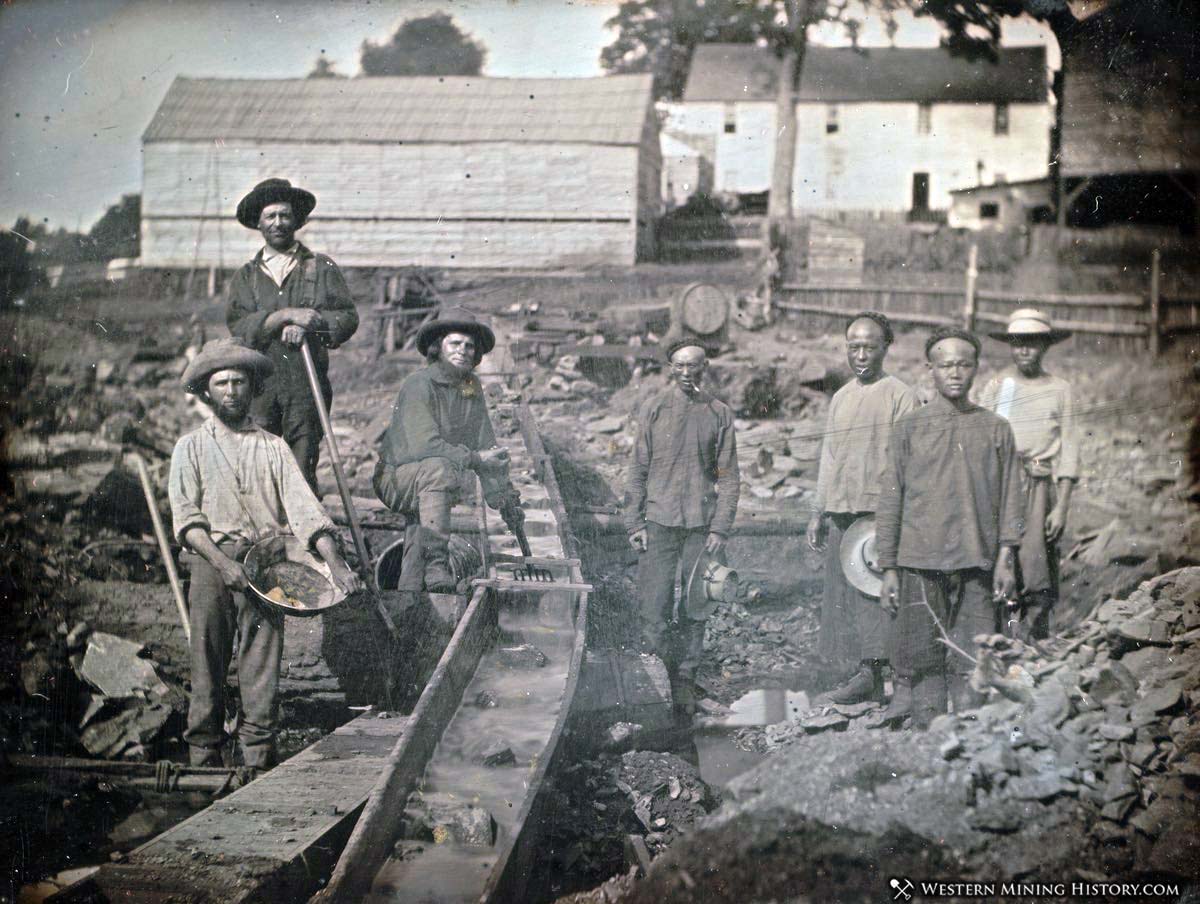The Young America mine was located in the Sardine Lakes area, just a few miles north of Sierra City, California. The operation’s stamp mill was situated in a particularly spectacular location on the shore of Lower Sardine Lake, as the photos in this collection reveal.
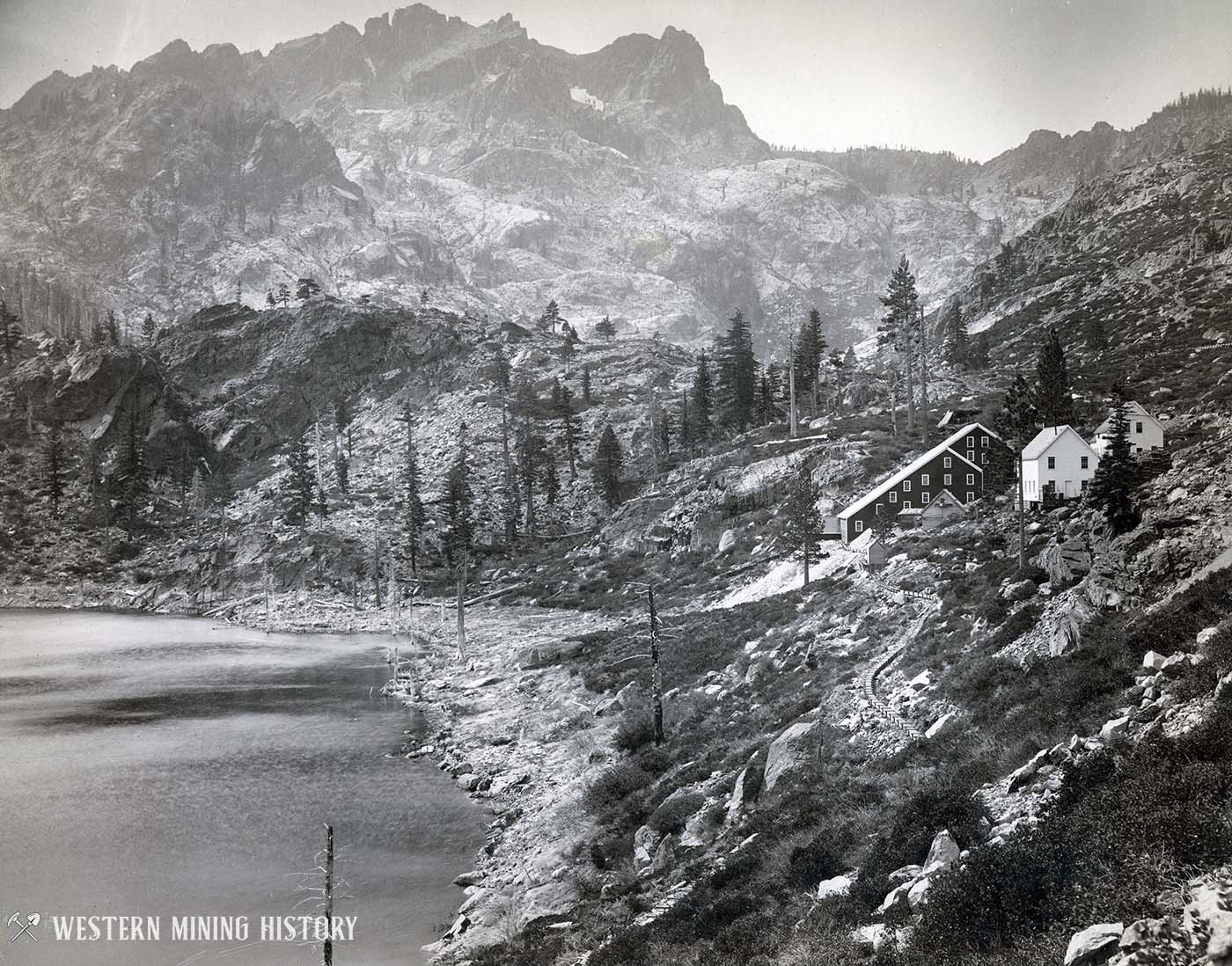
The mine was discovered in the early 1880s, and in 1883 the claim was acquired by a group of investors that included Philip Deidesheimer, the engineer famous for inventing the square-set timbering system at the Comstock Lode in the early 1860s.
An article from April of 1884 stated: “The ledge in the Young America is showing up finely. This mine is one of the most promising around here and is likely to be worked on a big scale in the near future.”
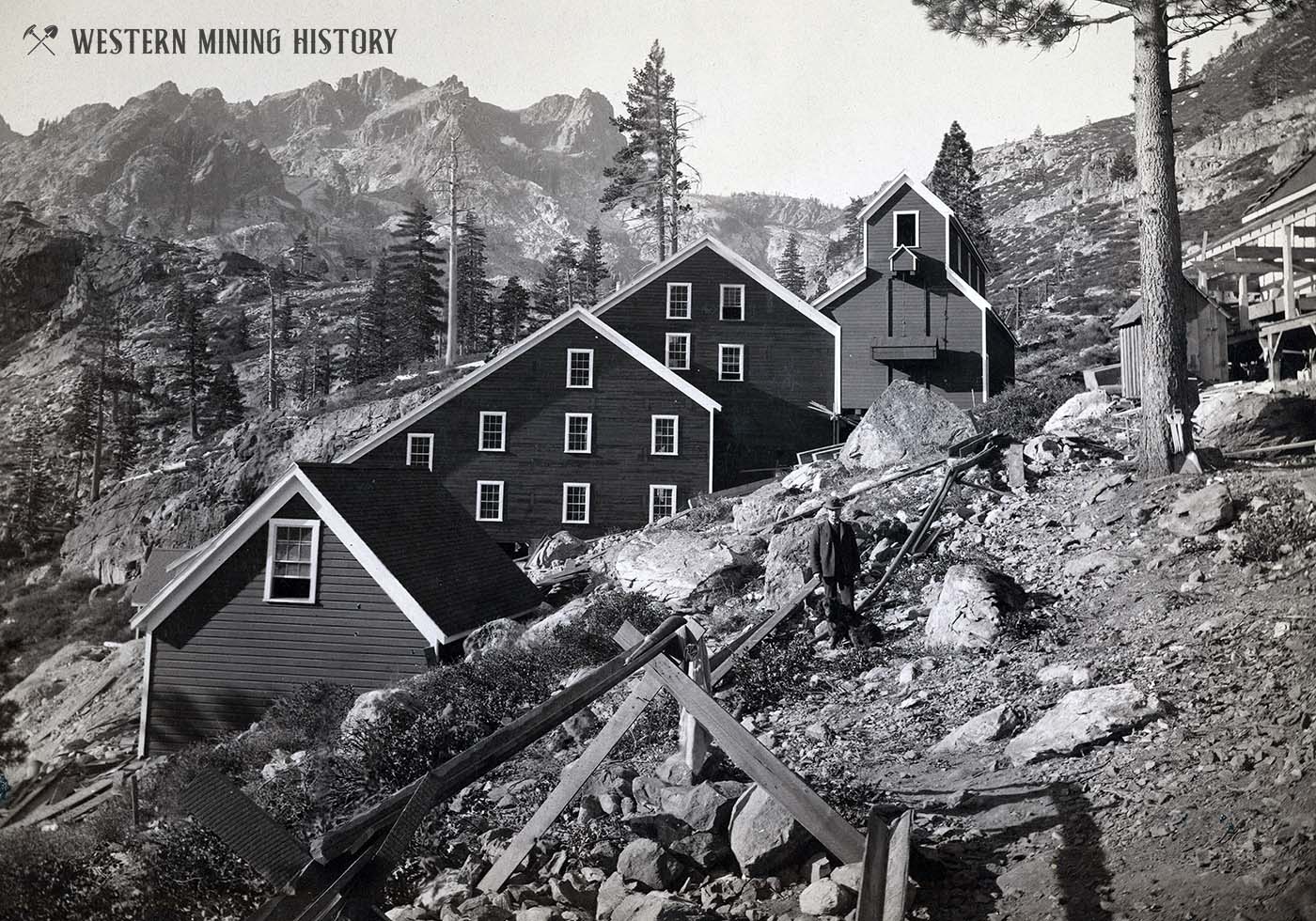
Early development work proved that the mine was a rich producer, and in 1884 plans were laid for a new stamp mill on the shore of Lower Sardine lake.
The mill was upgraded in 1885 and 1886, resulting in a total of 40 stamps crushing ore from the Young America mine. It was claimed that the pounding of the stamps could be heard all the way at Sierra City.
In the summer of 1885 a 3,200 foot cable tramway was constructed to deliver ore to the mill, as seen in the photo below.
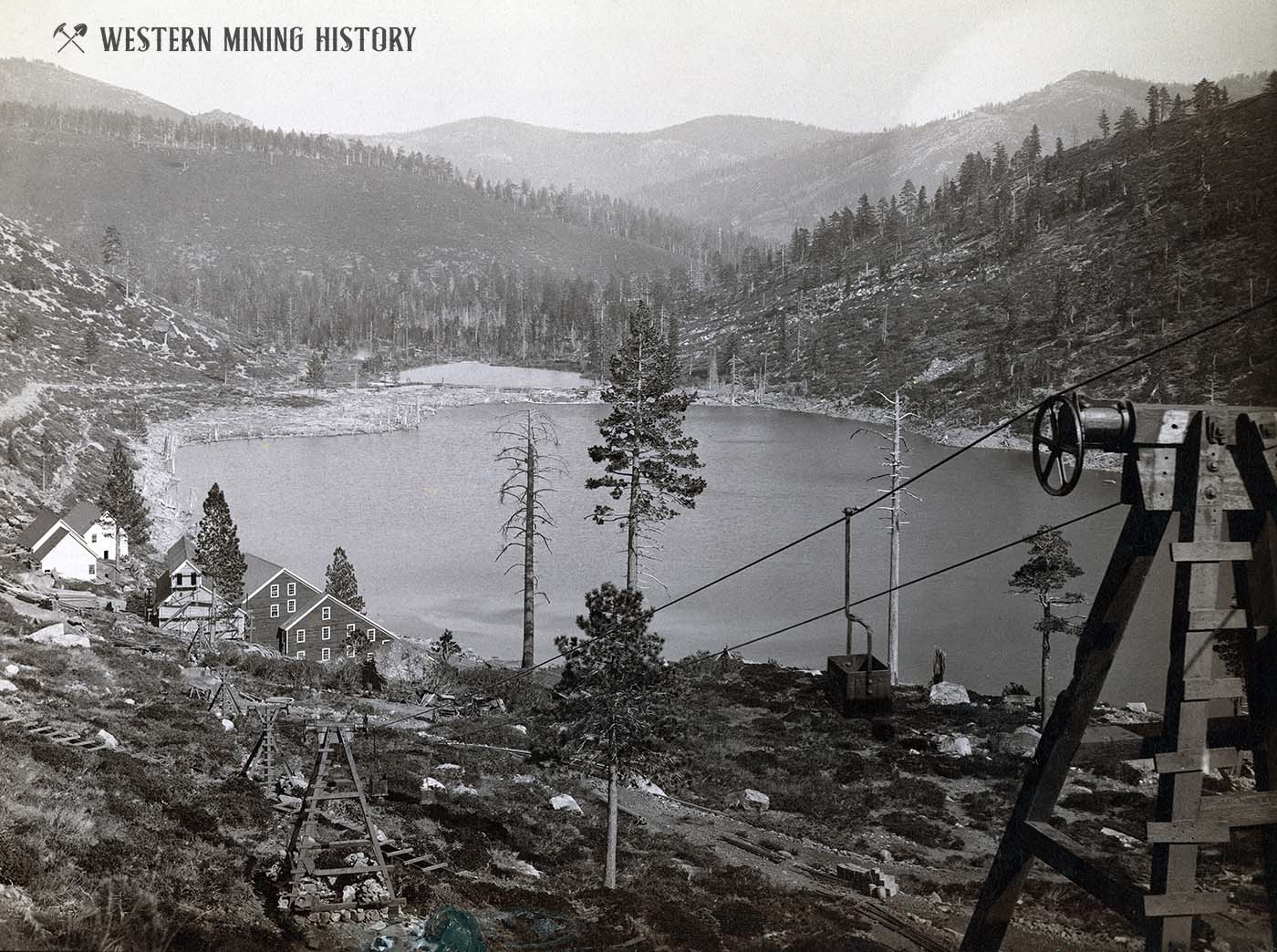
The 1886 Annual Report of the California State Mineralogist described the Young America mine:
The mill occupies a site 3,200 feet from the mine – in this distance the perpendicular height of the mine above the mill is 900 feet. The one is conveyed to the mill by an elevated tramway in buckets of 100 pound capacity. At present it requires the work of two men to fill the buckets in transit, but that duty will soon be performed automatically by an invention of Mr. Busch, for foreman of the mine.
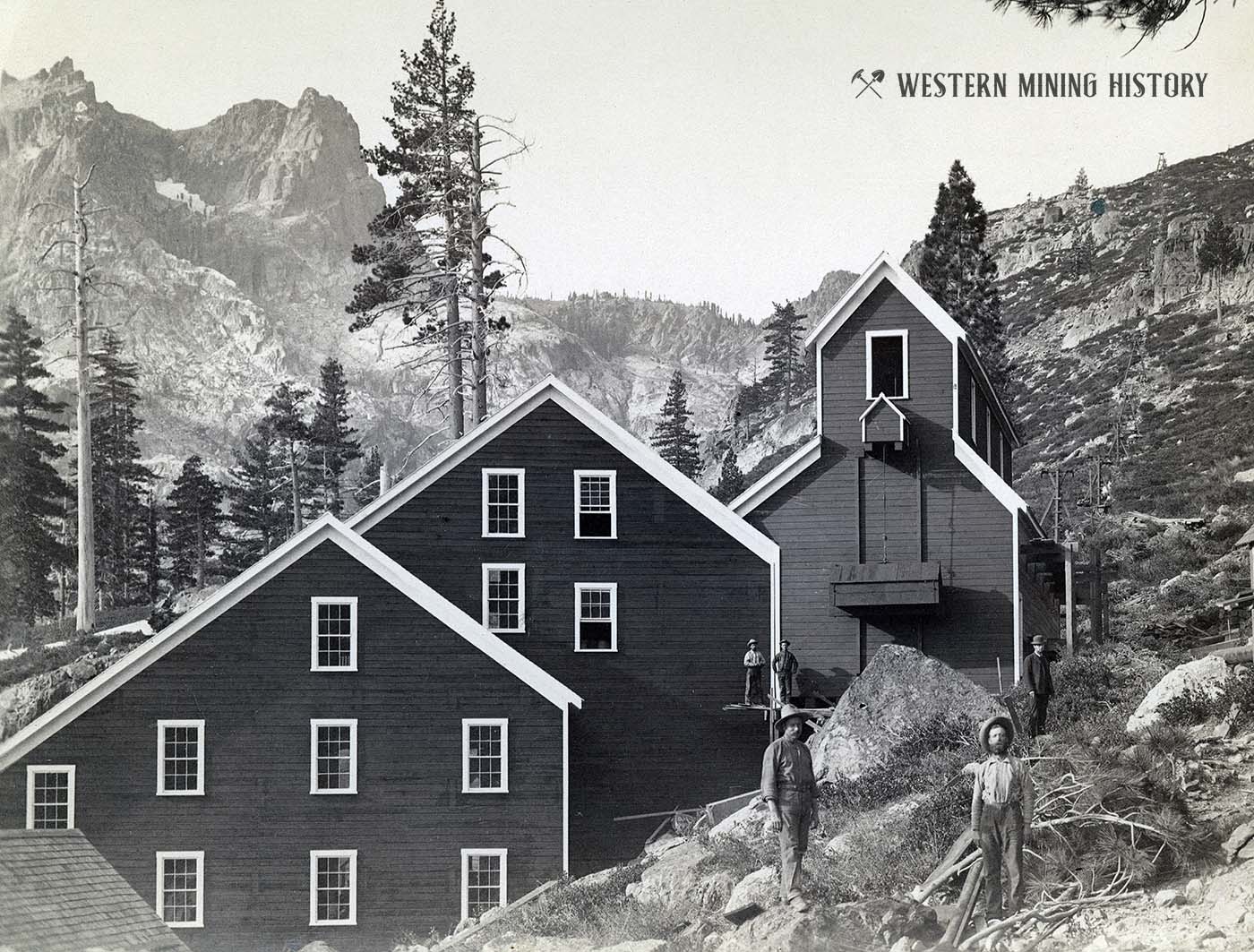
The Consolidated contains within its environs four lakes – the smaller one, three fourths of a mile below the mill, is used to impound the tailings, the higher one directly under the snowcapped Buttes, feeds the waters of the melting snow of the reservoir, which furnishes the mill with power.
The gross proceeds of the mine and mill for the year ending August 15, 1886 amounted to $294,000. For the first 3 months of the year there were but 10 stamps, then 10 more were put in place, and lastly on Aug. 18, 40 stamps were dropping on the quartz of the mine.
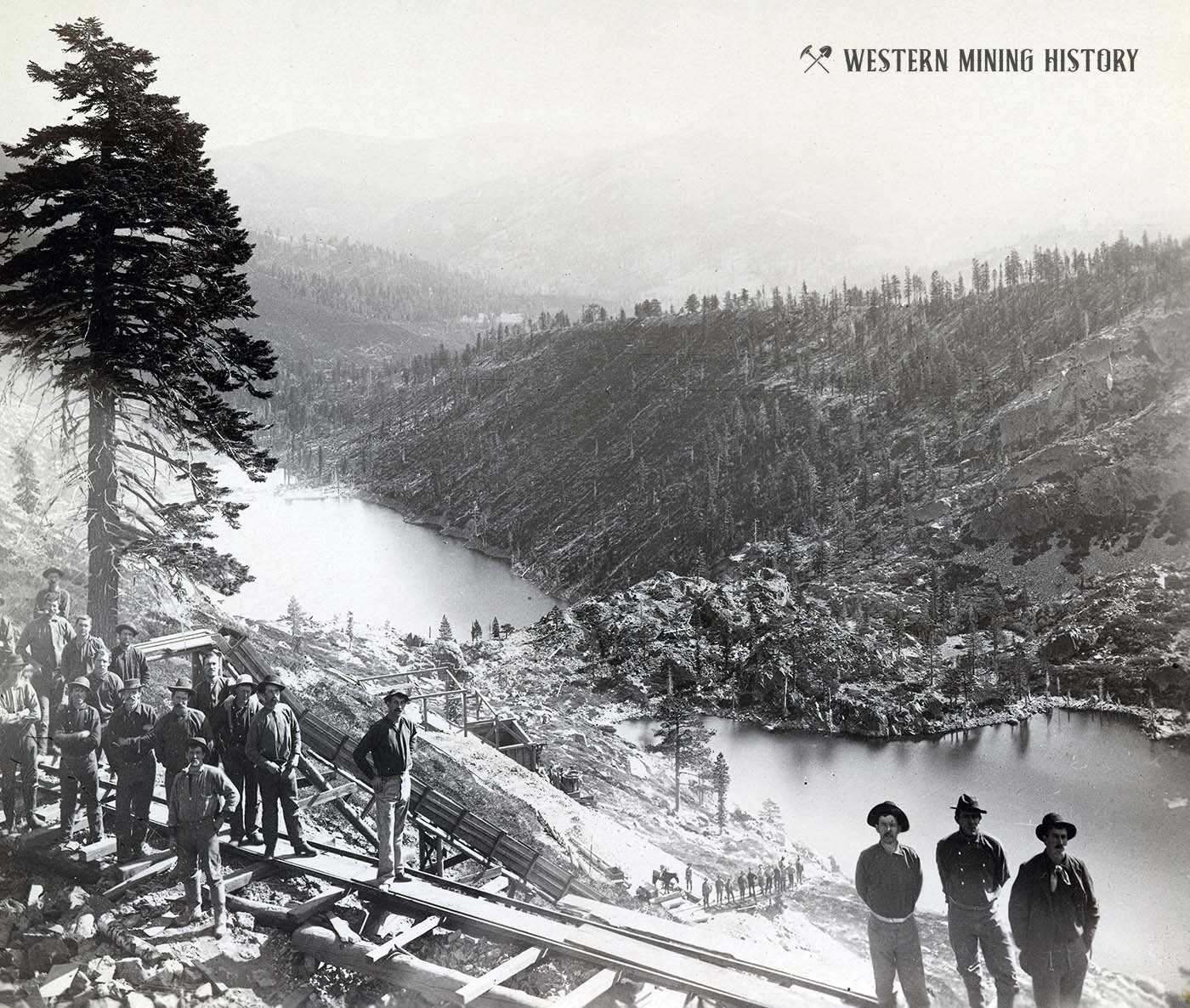
Owning to the favorable location this mine can be opened by tunnels to a depth of about 1600 feet. During the year the company has built a dam, separating the 2 larger lakes, 175 feet long, 25 feet high and 52 feet at the base. Cost $8000.
The photo below shows men working a sluice, and in the background a group of well-dressed individuals standing on what appears to be a retaining wall of a road, likely the one built in 1885 to access the mine works. Due to its incredibly beautiful location, the mine became a popular attraction for tourists.
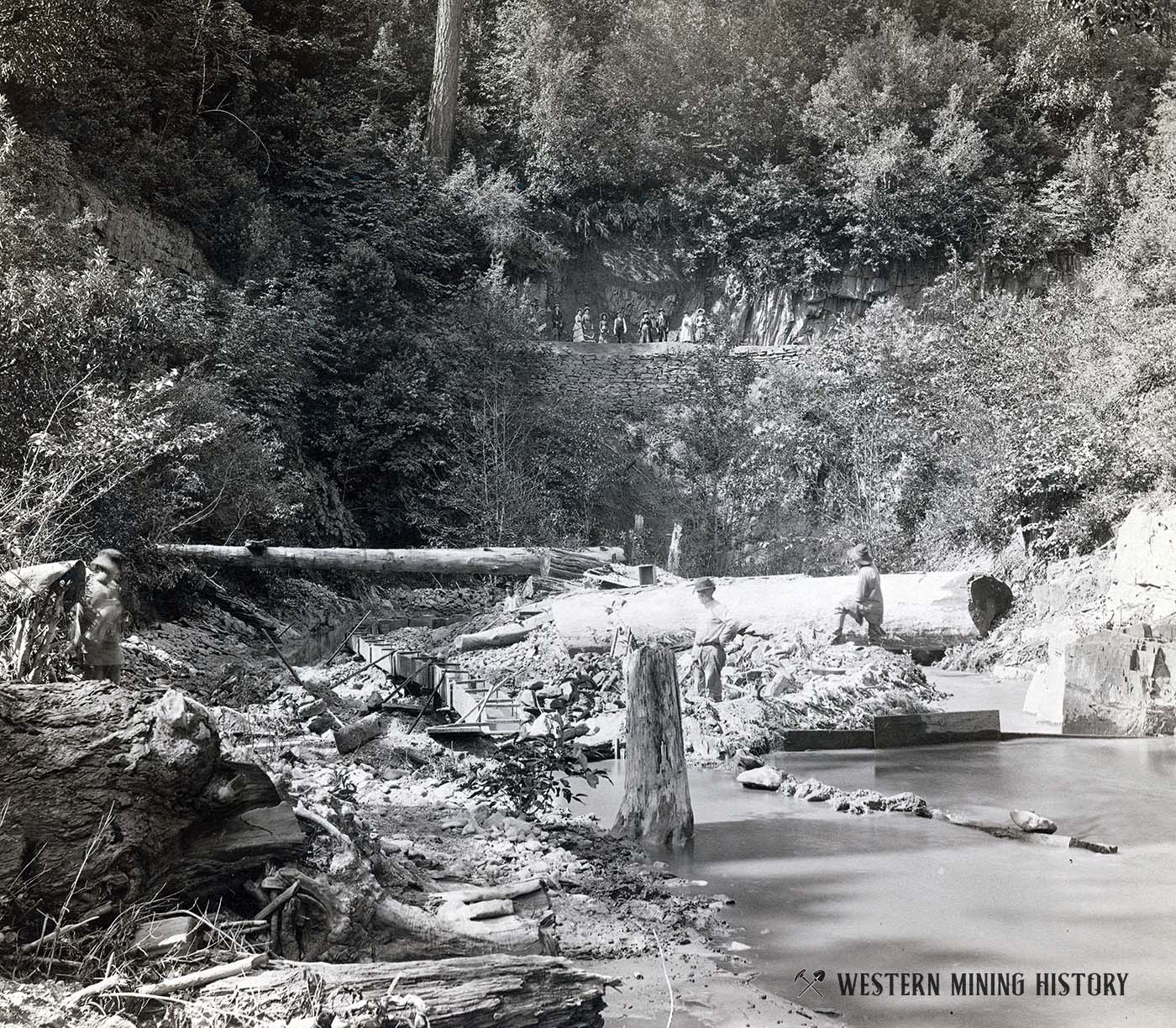
In 1888 the mine employed 110 men, but lack of water to power the mill resulted in intermittent idling of many of the mill’s stamps. By 1890 the production at the mine was waning and it was reported in December of that year that 40 men had been laid off. In 1892 the company found itself in financial trouble. The mine continued to operate with a skeleton crew through the end of that year.
After 1892 the mine came under new ownership at least twice. In the fall of 1896 a cyanide plant was put into operation with a 150 tons per day capacity, processing tailings that “run from $16 to $20 a ton”. During the summer of 1897 most of the mine’s surface buildings were destroyed by fire.
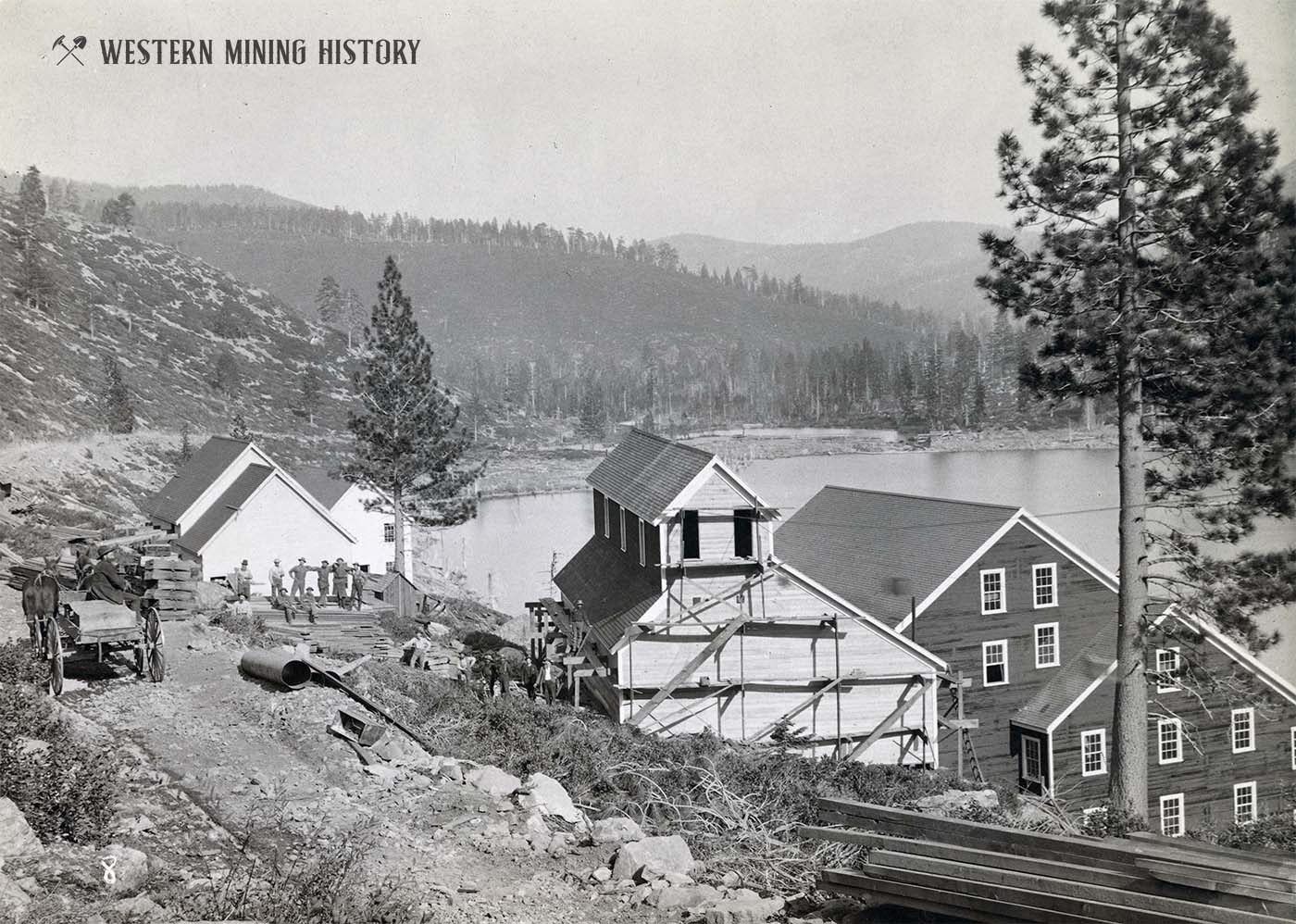
Although various attempts were made to restart the workings of the mine, most were not successful or were small-scale operations focused on processing waste rock and tailings from previous decades.
The Young America mine ultimately produced around $1,500,000, making it one of Sierra County’s richest mines.
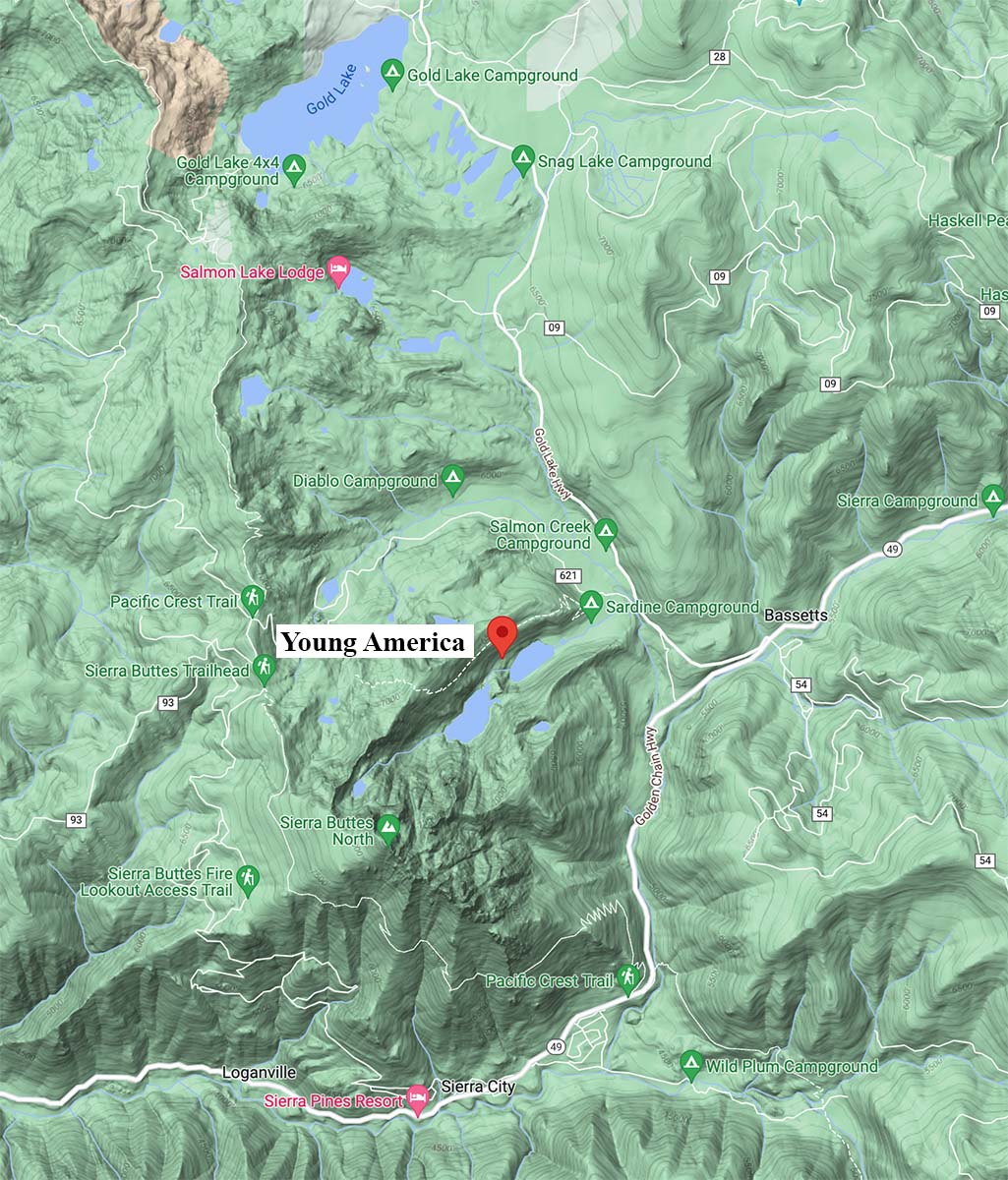
Gold Theft at the Young America Mine
While researching the young America mine, I came across some articles that reported that in the spring of 1886 Phillip Deidesheimer was caught stealing a large quantity of gold from the mine. This would have been a shocking development in the history of one of the most notable figures in the history of American mining, however additional research cleared his name.
It seems that Deidesheimer’s own nephew, who shared the same name, was the culprit. The following article describes the incident.
The Scheme of A Mining Secretary to Rob His Employers
This article appeared in the April 7, 1886 edition of the Plumas County Bulletin.
[Sierra Tribune.]
In the Tribune of February 5th there appeared an item to the effect that Phillip Deidesheimer, the Secretary of the Young America Mining Company, had received a telegram summoning him to New Mexico to take charge of a mine, and that be would start for there the following morning. A few days later it came to our ear that young Deidesheimer had been caught in an attempt at one of the boldest robberies on record.
A reporter of the Tribune at once called on Manager Busch to ascertain if the report was true, and was informed that it was. But Mr. Busch and others requested that we should say nothing about the matter, at least for the present, as, for certain reasons, it might have a serious effect. As we could not conscientiously disregard the request, we did not mention the affair. However, the matter has at last leaked out, an account of the affair having appeared in the San Francisco Chronical of last Saturday, and we feel at liberty to give the facts of the sensational episode.
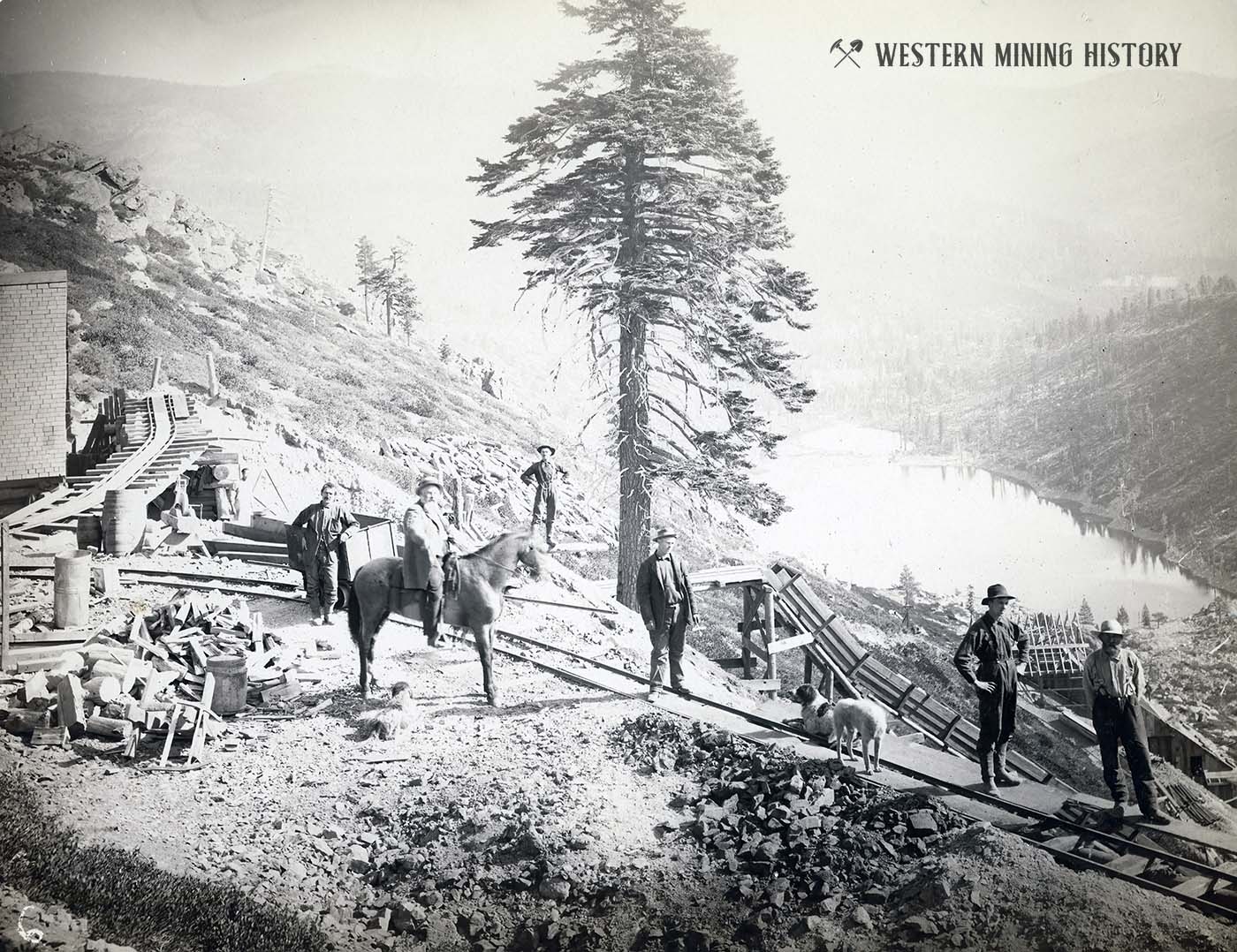
For about two months Mr. Busch, who was then Superintendent, M. H. Mead, then Assistant Superintendent, and P. Deidesheimer, uncle of the Secretary, had had their suspicions aroused by the diminution of the quicksilver from the amounts put in the batteries etc., as well as by the fact that the results of the last three clean-ups had va- ried several thousands of dollars from that of the first month’s run.
Robbery was the only theory they could advance for such decreases. Different persons were suspected, but no clue could be obtained. Finally Mr. Busch concluded that young Deidesheimer was a thief. He began to “spot” him, and before long be- came convinced that he was correct in his presumption. The next thing was to discover where the bullion was hidden.
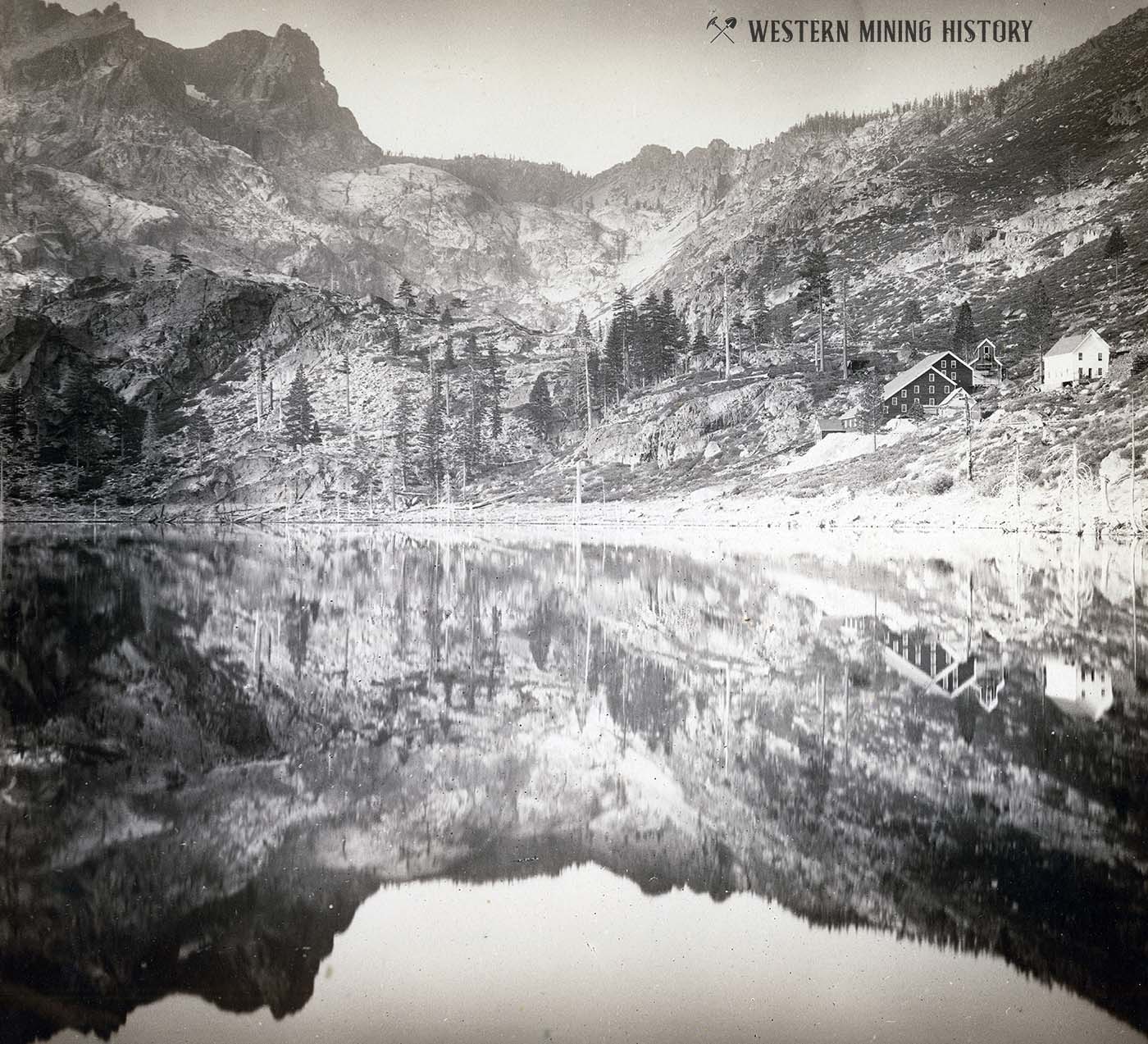
Mr. Busch communicated his suspicions to only one or two persons, and had to exercise the utmost caution lest the Secretary might discover that he was being watched, in which case he might and doubtless would have thrown the bullion into Sardine Lake, near by, and thus destroy all evidence of his guilt.
A few weeks before the exposure of the crime a watchman was stationed near the office so that the young man would have no means of egress or ingress from or to his room without being seen, but be did not leave his apartment. At length Mr. Mead was informed by Mr. Busch of the secret, and the two planned a scheme, Mr. Mead having meantime examined Deidesheimer’s trunk, which was under the latter’s bed, and concluded that it contained something unusually heavy.
The Secretary was requested to accompany one of the officers of the Company to this place on some pretended business. It was noticed that he reluctantly complied with the request and betrayed evences of extreme nervousness on leaving the mine. While absent his trunk was opened, and in it was found gold bullion to the value of $21,020. The bullion was replaced.
It had been arranged between the Superintendant and the party who accompanied Deidesheimer that if any discovery was made a telegram should be sent to this place worded as follows: “Struck it very rich on lower level.” The telegram was sent, and the Secretary and officer immediately returned. On arriving at the mine, Deidesheimer was accompanied to his room by Supt. Busch and Mr. Mead and requested to open the trunk.
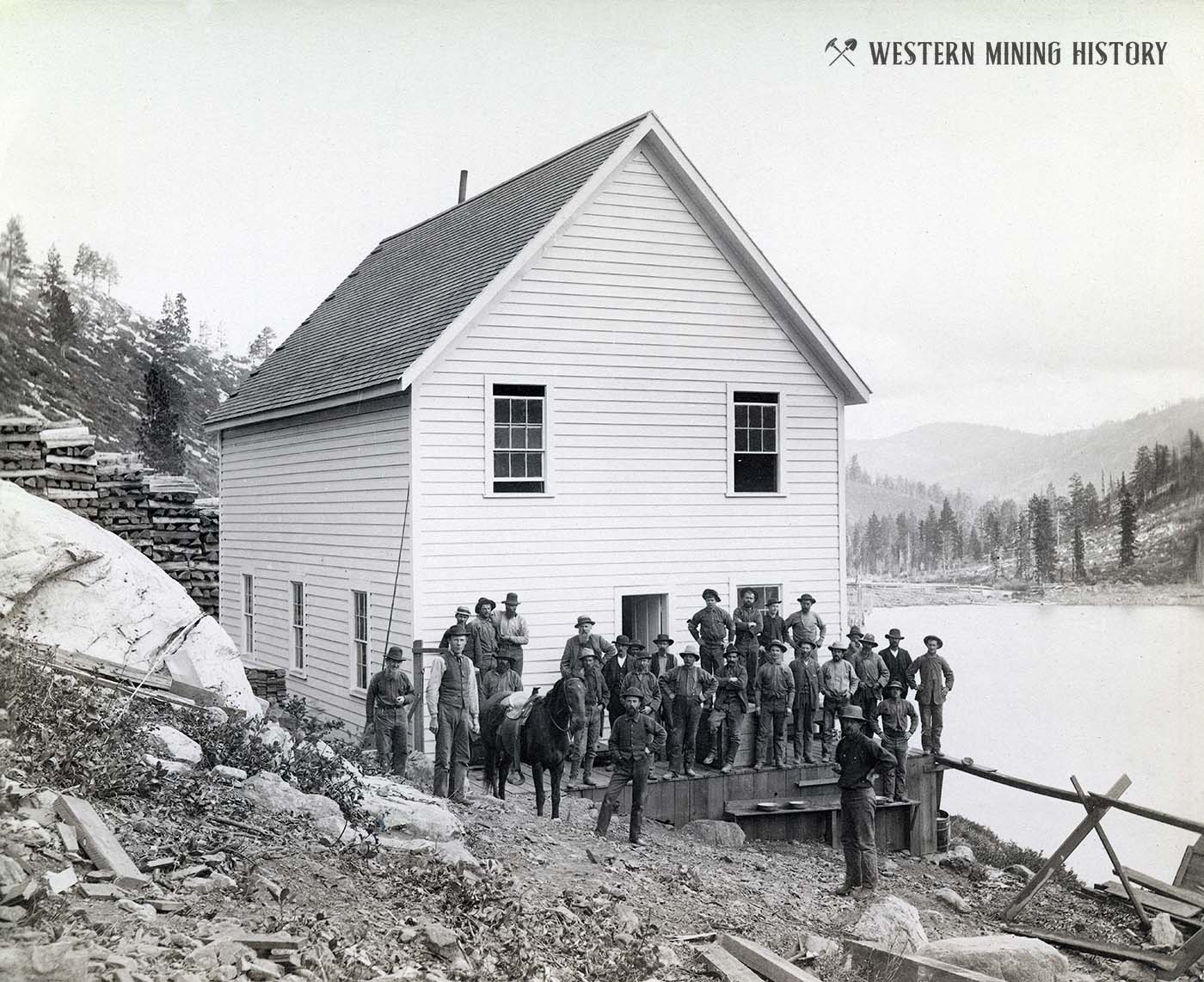
“What do you take me for? asked the startled Secretary, white as a sheet and shaking like an aspen leaf. “A thief!” was the reply. Without a word the Secretary pulled out the trunk, unlocked it and produced the bullion. He was then ordered to pack up and leave in a hurry.
When the uncle was apprised of the facts at Downieville he was overwhelmed with grief. He had the utmost faith in the young man, and it was a trying ordeal for the uncle who had so generously educated the erring nephew and given him advantages that but comparatively few young men enjoy.
Phillip, as he was called (J. P. are his initials), is only about 26 years of age, and had before him a life full of promise. Fine looking-handsome, it might be said, and remarkably intelligent and bright, he would in time have commanded a high position among his fellow-men had he not so misused his opportunities.
It All Started With The Gold Rush
The great California Gold Rush kicked off the entire saga of western mining. Read about it at The California Gold Rush.
